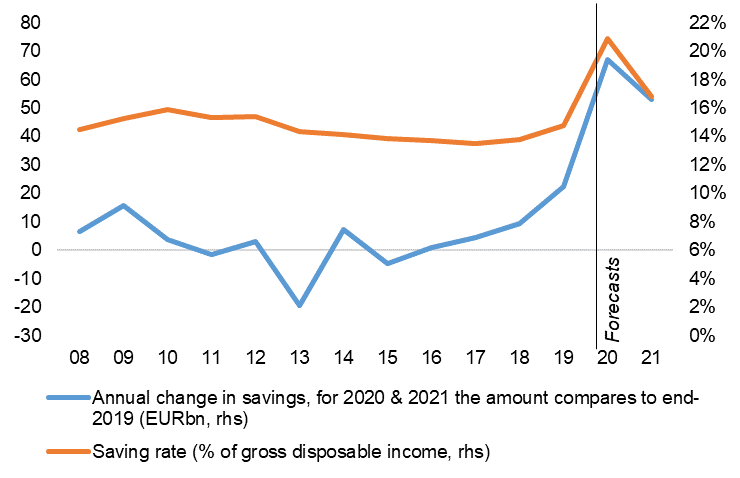Household confidence will play a key role in France's economic recovery from the Covid-19 crisis . But unlike consumption, confidence never recovered to its pre-crisis level even when the first lockdown was lifted. After a short-lived rebound in June, and with the implementation of a second lockdown in November, confidence has deteriorated severely to near the historically low level seen in December 2018 during the peak of the ‘Yellow Vest’ movement. The “confidence effect” usually explains around one third of the consumption gains in France but this relation seems to now be ‘temporarily’ broken (see Figure 1). During the first lockdown, the timely announcement of generous fiscal support measures reassured households, helping to prevent a major confidence shock despite the historical drop in consumption. However, while the gradual easing of sanitary restrictions from May led to a consumption euphoria during the summer, it was fueled by “other” factors than confidence, such as pent-up demand and the unleashing of forced savings accumulated during the lockdown (close to EUR100bn in Q2). In our view, household confidence in France has been held back by continued uncertainty over the sanitary and economic outlook, as well as growing fears of unemployment (after a potential phasing out of the government support). Indeed, after a short-lived recovery in August , the unemployment outlook sub-component of the headline confidence indicator has deteriorated continuously.
Figure 1 – Consumer confidence (lhs) and consumption (rhs) - EURbn






